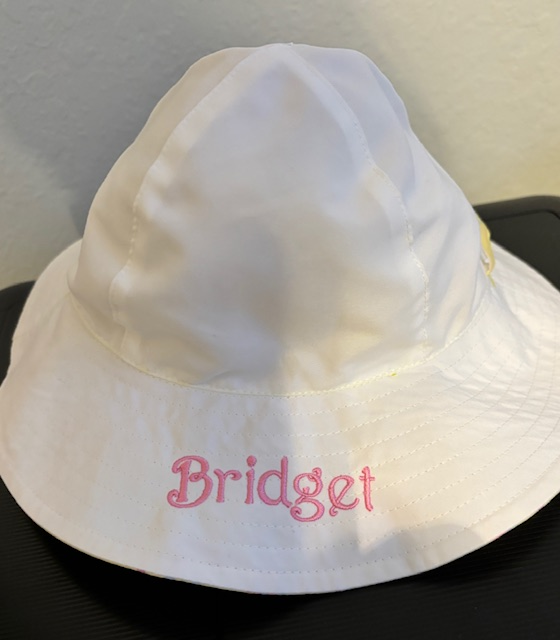The Art of Personalized Embroidery: Unlocking the Secrets to Creating Distinct and Unforgettable Layouts
The secrets to creating custom-made embroidery designs that astound the eye and leave an enduring perception lie in a delicate balance of strategy, creative thinking, and interest to detail. As we dive into the globe of customized embroidery, we reveal the nuanced interplay between string option, stitch intricacy, and style personalization that elevates a plain garment to a work of art.
Choosing the Right Needlework Threads
When selecting embroidery threads, what crucial aspects should you take into consideration to ensure the finest results for your custom-made layouts? The selection of needlework thread is critical in identifying the final result of your embroidered design.
Thicker strings can add measurement and structure to your design, while finer threads are optimal for intricate information and little text. In addition, thinking about the shade fastness and washability of the thread is crucial to make certain that your customized layouts preserve their quality and vibrancy over time.
Checking Out Various Stitch Methods
To delve right into the realm of 'Discovering Different Stitch Methods', one must realize the complexities and subtleties that each sewing method brings to the art of needlework. Different stitch strategies not only include visual passion yet likewise add to the general texture and measurement of the design. One popular stitch strategy is the satin stitch, which involves very closely stuffed parallel stitches to develop a smooth and shiny surface area, suitable for completing forms and producing vibrant describes.
On the various other hand, the backstitch is a functional technique commonly made use of for laying out and adding great details. It includes sewing in reverse to create a solid line of needlework. In addition, the French knot stitch includes a responsive element to styles, best for developing textured accents like flower centers or attractive touches.
Exploring different stitch methods enables embroiderers to have fun with light, darkness, and deepness within their layouts, elevating the visual appeal and artistic top quality of their needlework projects. By understanding different sewing methods, one can open limitless opportunities for creating special and memorable personalized needlework items.
Incorporating Personalized Style Aspects
Having actually checked out the details of various stitch techniques such as the satin stitch, backstitch, and French knot, the emphasis currently shifts in the direction of including tailored style elements in personalized embroidery tasks. Personalized layout aspects play an essential duty in making embroidery projects truly one-of-a-kind and unforgettable.
Another method to incorporate personalized design components is by including signs or motifs that hold unique definition to the recipient or mirror their interests and individuality. Integrating a favored flower, pet, or hobby-related icon can make the embroidery style more meaningful and customized. In addition, choosing colors that reverberate with the recipient or align with the desired style can further improve the customization of the needlework project.
Understanding the Art of Color Sychronisation
One secret aspect of color control is comprehending shade theory. This consists of knowing exactly how various colors engage with each other, the emotions they share, and how they can be integrated to develop visually enticing designs. By using color theory concepts, embroiderers can create harmonious color palettes that enhance the general appearance of the layout.
Additionally, taking notice of comparison is important in shade sychronisation. Making use of contrasting colors can help specific components their explanation of the layout pop, improve clarity, and produce an aesthetically dynamic needlework piece. By mastering the art of shade control, embroiderers can elevate their designs and create unforgettable items that resonate with clients and visitors alike.
Enhancing Texture With Advanced Embroidery Stitches

French knots, as an example, are best for including tiny, elevated dots to your design, imitating the look of grains or creating a distinctive surface area. Bullion knots, on the various other hand, can be made use of to develop twisted, ropelike elements that add a glamorous feel to the embroidery. Seed stitching involves tiny, scattered stitches that can complete areas with a polychromatic structure, while turkey work produces fluffy, dimensional accents similar to animal fur or vegetation. Trying out these advanced embroidery stitches allows you to press the borders of typical embroidery and develop absolutely one-of-a-kind and visually attractive textures in your styles.
Final Thought
Finally, the art of custom needlework includes a combination of choosing the best threads, discovering different stitch techniques, incorporating personalized style aspects, mastering shade sychronisation, and enhancing appearance with sophisticated stitches. By understanding and executing these crucial elements, embroiderers can produce one-of-a-kind and unforgettable designs that showcase their imagination and ability. Embroidery fanatics can unlock the keys to producing gorgeous and bespoke items that stand apart and leave a long-term perception.